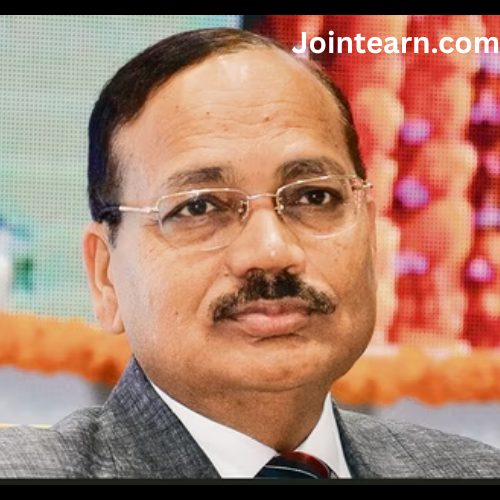
Chief Justice of India (CJI) BR Gavai is scheduled to retire on November 23, marking the end of his tenure as the head of the Indian judiciary. As part of the well-established procedure for appointing a new CJI, the Union Ministry of Law and Justice has formally requested CJI Gavai to recommend the name of his successor approximately one month before his retirement. Following the convention laid down by the Memorandum of Procedure, the Chief Justice recommends the name of the senior-most judge of the Supreme Court who is “considered fit to hold the office.”
According to senior judicial sources, Justice Surya Kant is next in line to become the 51st Chief Justice of India after CJI Gavai demits office. Once the formal recommendation is made, the process of his appointment will be initiated, and Justice Surya Kant will begin assisting the incumbent CJI in key administrative decisions to ensure a smooth transition.
Who Is Justice Surya Kant?
Justice Surya Kant was born on February 10, 1962, in Hisar, Haryana, into a middle-class family. His life and career trajectory reflect a steady rise built on perseverance, integrity, and professional excellence.
He completed his early education in Hisar and graduated from the Government Post Graduate College, Hisar, in 1981. Pursuing his passion for law, he earned his Bachelor’s degree in Law (LLB) from Maharishi Dayanand University, Rohtak, in 1984. Shortly thereafter, he began his legal career, practicing law at the district courts in Hisar the same year.
In 1985, Justice Surya Kant moved to Chandigarh to practice at the Punjab and Haryana High Court, where he soon gained recognition for his skill, dedication, and sound legal understanding. Over the years, he handled a wide range of cases, establishing himself as one of the leading advocates in the region.
Youngest Advocate General of Haryana
Justice Kant’s legal acumen and growing reputation led to his appointment as the Advocate General of Haryana in 2000, making him the youngest person ever to hold the post at the time. His tenure was marked by his commitment to upholding legal integrity and providing objective advice to the state government on constitutional and administrative matters.
Elevation to the Judiciary
On January 9, 2004, Surya Kant was elevated as a Permanent Judge of the Punjab and Haryana High Court. During his tenure, he delivered several landmark judgments dealing with constitutional law, administrative fairness, and social justice. Known for his clarity of thought and empathy for the marginalized, Justice Kant earned respect both from his peers and the Bar.
In October 2018, he was appointed as the Chief Justice of the Himachal Pradesh High Court, where he emphasized judicial efficiency, quick case disposal, and greater access to justice for the poor and underprivileged. His administrative reforms at the Himachal judiciary were widely appreciated for improving transparency and reducing case pendency.
Elevation to the Supreme Court
Justice Surya Kant was elevated to the Supreme Court of India in May 2019, where he has since been part of several significant benches. His judgments and observations reflect a balanced approach to law — blending constitutional principles with social realities. He has been part of important rulings related to environmental protection, civil liberties, and governance.
Throughout his judicial career, Justice Kant has been known for his measured tone, sharp legal reasoning, and an emphasis on fairness and human dignity.
Judicial Philosophy and Contributions
Justice Surya Kant is often described as a jurist who believes in a “citizen-centric” approach to justice. His judgments have reflected deep concern for issues such as access to justice, equality before law, and the rights of marginalized communities.
He has also been vocal about the need for modernizing the judiciary, advocating greater use of technology in court processes and improved training for judges at all levels. His administrative experience, combined with his forward-looking approach, is expected to play a crucial role in steering the judiciary in the years ahead.
Justice Kant has also been involved in several key administrative decisions within the Supreme Court, including allocation of cases, digital initiatives, and measures to streamline judicial functioning.
Tenure as Chief Justice of India
If appointed as the next CJI, Justice Surya Kant will assume office after November 23, 2025, and will serve until his retirement on February 9, 2027 — a tenure of over one year and two months. His period as Chief Justice is expected to coincide with critical legal and constitutional challenges, including issues related to electoral reforms, digital privacy, and judicial transparency.
Legacy and Expectations
As the likely successor to CJI Gavai, Justice Surya Kant brings decades of judicial and administrative experience to the position. His elevation will continue the Supreme Court’s tradition of seniority and institutional continuity. Legal experts believe that under his leadership, the judiciary may witness further emphasis on judicial reforms, technology integration, and accessibility of justice.
His tenure will also be significant as it will cover a politically dynamic period in India, likely involving crucial constitutional and public interest matters. Observers expect him to focus on strengthening the independence of the judiciary, enhancing coordination between the judiciary and the executive, and ensuring timely delivery of justice to citizens.
Conclusion
Justice Surya Kant’s journey — from a young lawyer in Hisar to the threshold of becoming India’s Chief Justice — reflects determination, professional merit, and unwavering commitment to the rule of law. With a career spanning over four decades, he has built a reputation for fairness, humility, and administrative efficiency.
As Chief Justice of India BR Gavai prepares to retire, the formal process of appointing Justice Surya Kant as his successor is set to begin. Once approved by the President of India, Justice Kant will take over as the 51st Chief Justice of India, guiding the nation’s highest court through a crucial period of judicial evolution and social change.


Leave a Reply